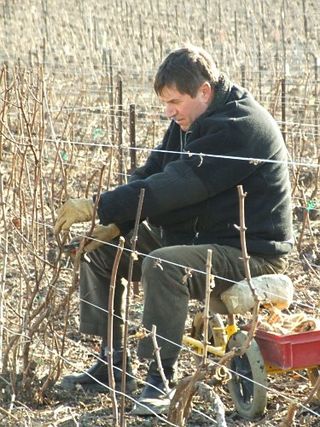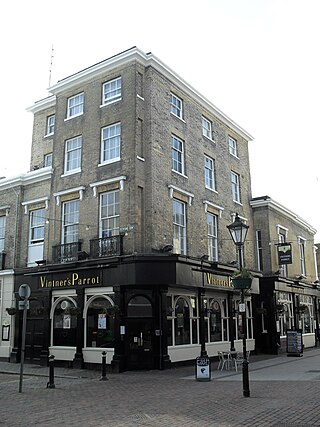
A chronicle is a historical account of events arranged in chronological order, as in a timeline. Typically, equal weight is given for historically important events and local events, the purpose being the recording of events that occurred, seen from the perspective of the chronicler. A chronicle which traces world history is a universal chronicle. This is in contrast to a narrative or history, in which an author chooses events to interpret and analyze and excludes those the author does not consider important or relevant.

Year 1559 (MDLIX) was a common year starting on Sunday of the Julian calendar.
A prince consort is the husband of a monarch who is not a monarch in his own right. In recognition of his status, a prince consort may be given a formal title, such as prince. Most monarchies do not allow the husband of a queen regnant to be titled as a king because it is perceived as a higher title than queen, however, some monarchies use the title of king consort for the role.
Regnal numbers are ordinal numbers used to distinguish among persons with the same name who held the same office. Most importantly, they are used to distinguish monarchs. An ordinal is the number placed after a monarch's regnal name to differentiate between a number of kings, queens or princes reigning the same territory with the same regnal name.

The Worshipful Company of Drapers is one of the 111 livery companies of the City of London. It has the formal name The Master and Wardens and Brethren and Sisters of the Guild or Fraternity of the Blessed Mary the Virgin of the Mystery of Drapers of the City of London. More usually known simply as the Drapers' Company, it is one of the historic Great Twelve Livery Companies and was founded during the Middle Ages.

The Worshipful Company of Vintners, one of the Great Twelve City Livery Companies, retains close links with the wine trade.

The Kingdom of England was a sovereign state on the island of Great Britain from the early tenth century, when it emerged from various Anglo-Saxon kingdoms, until May 1, 1707, when it united with Scotland to form the Kingdom of Great Britain, which would later become the United Kingdom. The Kingdom of England was among the most powerful states in Europe during the medieval and early modern colonial periods.

The House of Wessex, also known as the House of Cerdic, the House of the West Saxons, the House of the Gewisse, the Cerdicings and the West Saxon dynasty, refers to the family, traditionally founded by Cerdic of the Gewisse, that ruled Wessex in Southern England from the early 6th century. The house became dominant in southern England after the accession of King Ecgberht in 802. Alfred the Great saved England from Viking conquest in the late ninth century and his grandson Æthelstan became first king of England in 927. The disastrous reign of Æthelred the Unready ended in Danish conquest in 1014. Æthelred and his son Edmund Ironside attempted to resist the Vikings in 1016, but after their deaths the Danish Cnut the Great and his sons ruled until 1042. The House of Wessex then briefly regained power under Æthelred's son Edward the Confessor, but lost it after the Confessor's reign, with the Norman Conquest in 1066. All kings of England since Henry II have been descended from the House of Wessex through Henry I's wife Matilda of Scotland, who was a great-granddaughter of Edmund Ironside.

A winemaker or vintner is a person engaged in winemaking. They are generally employed by wineries or wine companies, where their work includes:

The House of Lusignan was a royal house of French origin, which at various times ruled several principalities in Europe and the Levant, including the kingdoms of Jerusalem, Cyprus, and Armenia, from the 12th through the 15th centuries during the Middle Ages. It also had great influence in England and France.

Peter I was King of Cyprus and titular King of Jerusalem from his father's abdication on 24 November 1358 until his death in 1369. He was invested as titular Count of Tripoli in 1346. As King of Cyprus, he had some military successes, but he was unable to complete many of his plans due to internal disputes that culminated in his assassination at the hands of three of his knights.

Albert Chevallier Tayler was an English artist who specialised in portrait and genre painting, but was also involved in the plein air methods of the Newlyn School. He studied at Heatherley's School of Art, Royal Academy Schools and with avant-garde painters in Paris. He was educated at Bloxham School in Oxfordshire.
James Anderson was a Scottish writer and minister born and educated in Aberdeen, Scotland. He was ordained a minister in the Church of Scotland in 1707 and moved to London, where he ministered to the Glass House Street congregation until 1710, to the Presbyterian church in Swallow Street until 1734, and at Lisle Street Chapel until his death. He is reported to have lost a large sum of money in the South Sea Company crash of 1720. Anderson is best known for his association with Freemasonry.

Nine Worthies of London is a book by Richard Johnson, the English romance writer, written in 1592. Borrowing the theme from the Nine Worthies of Antiquity, the book, subtitled Explaining the Honourable Excise of Armes, the Vertues of the Valiant, and the Memorable Attempts of Magnanimous Minds; Pleasaunt for Gentlemen, not unseemly for Magistrates, and most profitable for Prentises, celebrated the rise of nine famous Londoners through society from the ranks of apprentices or ordinary citizens.
Sir Henry Picard was Lord Mayor of London in 1356 and 1357.

The Auld Alliance was an alliance between the kingdoms of Scotland and France against England made in 1295. The Scots word auld, meaning old, has become a partly affectionate term for the long-lasting association between the two countries. Although the alliance was never formally revoked, it is considered by some to have ended with the signing of the Treaty of Edinburgh in 1560.

The Normans were a population arising in the medieval Duchy of Normandy from the intermingling between Norse Viking settlers and indigenous West Franks and Gallo-Romans. The term is also used to denote emigrants from the duchy who conquered other territories such as England and Sicily. The Norse settlements in West Francia followed a series of raids on the French northern coast mainly from Denmark, although some also sailed from Norway and Sweden. These settlements were finally legitimized when Rollo, a Scandinavian Viking leader, agreed to swear fealty to King Charles III of West Francia following the siege of Chartres in 911. The intermingling in Normandy produced an ethnic and cultural "Norman" identity in the first half of the 10th century, an identity which continued to evolve over the centuries.

The Thieves' Kitchen is a pub in the centre of the town and borough of Worthing, West Sussex. Established as a public house in the late 20th century, it occupies two early 19th-century listed buildings in the oldest part of the town: a Greek Revival-style former wine merchants premises, and a Neoclassical chapel built for Wesleyan Methodists in 1839. The main part of the pub is in the wine merchants building facing Warwick Street, while the old chapel, facing Bedford Row, serves as its function room. Both buildings have been designated separately as Grade II Listed Buildings.

This page is a list of all the matches that Portugal national football team has played between 1960 and 1979.

The 1980s were the most successful decade in the existence of Belgium's national football team, as they appeared in four of the five major tournaments and also reached their best positions so far: second place at Euro 1980 and fourth place at the 1986 World Cup. Apart from their appearances at end stages, they ensured qualification for the 1990 World Cup during the last years of the decade. Overall, the balance was positive with 39 wins versus 24 losses.
















